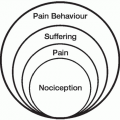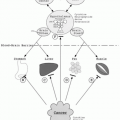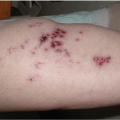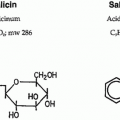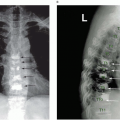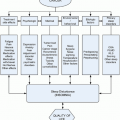Related Issues
HOME CARE
Home care is a dynamic component of the health care system. In the United States, several factors have contributed towards change as well as growth in the home care industry. Over the last two decades, the use of home care and home infusion therapy continues to expand and grow. Several areas may account for this growth. Prospective payment for hospital services and diagnosis-related groups for Medicare patients, implemented in the mid-1980s, resulted in earlier discharge from hospital. An aging population and improved survival rates for chronic illnesses, including cancer, have led to an increased use of home care. In addition, marketplace regulation has forced the delivery of health care from its traditionally hospital-based center of services into alternative settings. For individuals requiring long-term therapy (such as those requiring lifelong intravenous nutrition support) inpatient care is not only expensive, but also prevents the individual from resuming normal lifestyle and work activities. Advances in pain management technology, such as ambulatory patient-controlled analgesias (PCA)s and the use of silicone subcutaneously tunneled neuraxial catheters have expanded the scope and success of interventional pain management beyond the hospital to the home. Potential benefits of home infusion therapy include decreased health care costs, patient/caregiver convenience, less time spent in hospital with the ability to extend interventional pain management strategies into the patient’s home. A possible disadvantage to home infusion therapy may include the additional burden placed on the patient/caregiver in terms of role responsibilities and schedules. Home care agencies must have explicitly defined policies and procedures consistent with regulatory bodies and national and regional standards of practice.
A provider of infusion therapy must be a licensed pharmacy or work in conjunction with a licensed pharmacy. Pharmacies are licensed by the board of pharmacy of the state in which they are located. State boards of pharmacies maintain requirements. For many patients, home nursing services are also provided to educate patients and their caregivers regarding administering the drug therapy, complying with the prescribed dosing schedule, understanding the drug delivery device being used (an infusion pump or other device), and other important information regarding the treatment regimen. Drug therapies commonly administered via infusion at home include antibiotics, chemotherapy, pain management, parenteral nutrition, and immune globulin. Diagnoses commonly requiring infusion therapy include infections that are unresponsive to oral antibiotics, cancer and cancer-related pain, gastrointestinal (GI) diseases or disorders which prevent normal functioning of the GI system, congestive heart failure, immune disorders, growth hormone deficiencies, and more.
Ambulatory infusion pumps are either designed to be therapy-specific, or are multipurpose, enabling treatments such as chemotherapy, systemic antibiotics, total parenteral nutrition, hydration therapy, and opioid pain control. Recent developments in pump design include remote access capability by modem with the ability to change pump settings and download data.
Home-based PCA therapy provides select patients with the ability to deliver analgesia based on their own perception of need. PCA therapy may be superior to oral analgesia, especially in the treatment of severe, fluctuating pain. Patient selection criteria include intact cognition and proper supervision from a family member or health professional. A collaborative interdisciplinary approach is necessary for effective pain control for the cancer patient receiving interventional pain management at home. Collaboration among the patient, the patient’s family, the home care nurse and home care agency, and the patient’s physician is necessary. The physician remains responsible for determining the appropriate drug, bolus dose, background infusion rate, and lockout interval.
PCA is increasingly more commonly used in the home setting as an effective option in pain management. As discussed above, the subcutaneous and intravenous routes are the primary methods of administration. The availability of a central vascular access device such as a tunneled or peripherally inserted central catheter (PICC) offers advantages over peripheral access to ensure safe and consistent administration of intravenous analgesia.
The safety and efficacy of home-based PCA opioid therapy has not been extensively reported as in-hospital use. One study,1 however, reported on the use of morphine PCA in the home environment of 143 preterminally and terminally ill tumor patients suffering either from excruciating chronic pain or severe chronic/acute complex pain that could not be relieved adequately by oral analgesia. After initial dose adjustment, which lasted 2 to 3 days, the median morphine was 93 mg/day (range: 12 to 464 mg/day). This median was 28% lower than the median dose administered orally prior to PCA therapy. During the course of treatment, morphine requirements increased by a median of 2.3 mg/day (range: -29 to 52 mg/day). Most patients were treated continuously in the home care setting until death, the median duration of treatment was 27 days (range: 1 to 437 days). Terminal morphine demands reached a median of 188 mg/day (range: 15 to 1008 mg/day). The authors concluded that PCA was both safe and effective in the home environment, attaining excellent results in 95 (66%) patients and satisfactory pain
relief in 43 (30%). PCA was considered insufficient in five (4%) cases. Side effects, in general, were considered mild, the most common being constipation, fatigue, and nausea.
relief in 43 (30%). PCA was considered insufficient in five (4%) cases. Side effects, in general, were considered mild, the most common being constipation, fatigue, and nausea.
Although further study is warranted, safe provision of domiciliary interventional pain management probably requires selection of appropriate patients, effective patient and caregiver education, well-defined policies, and use of experienced and knowledgeable home care agencies. We work very hard to establish domiciliary pain management whenever this is a feasible option for a cancer patient. It is our belief that it is both better and more effective for the patient and his or her family.
COMPLEMENTARY AND ALTERNATIVE MEDICINE
Complementary and alternative medicine (CAM) should be considered a group of diverse medical and health care systems, practices, and products that are not presently considered to be part of conventional medicine. The National Center for Complementary and Alternative Medicine (NCCAM) is a federally funded agency within the National Institutes of Health (NIH) and Department of Health and Human Services. NCCAM groups CAM practices into whole medical systems (eg, homeopathic and naturopathic medicine, systems that have developed in non Western cultures), mind-body medicine (eg, meditation, prayer, mental healing), biologically-based practices (eg, dietary supplements, herbal products), manipulative and body-based practices (eg, manipulation, massage), and energy medicine (eg, reiki, therapeutic touch, magnetic fields). CAM therapies are used widely among cancer patients.2
These therapies have been used as an alternative to conventional medicine (alternative medicine) and complementary to conventional medicine (complementary medicine). Most cancer patients use CAM with the hope of boosting the immune system, relieving pain, and controlling side effects related to disease or treatment. Only a minority of patients include CAM in the treatment plan with curative intent. Frequently, patients do not discuss CAM therapies with physicians.3 Mansky and Wallerstedt4 reported that the CAM domains of mind-body medicine, CAM botanicals, manipulative practices, and energy medicine were widely used as complementary approaches to palliative cancer care and cancer symptom management. In the area of cancer symptom management, auricular acupuncture, therapeutic touch, and hypnosis may help to manage cancer pain. Music therapy, massage, and hypnosis may have an effect on anxiety, and both acupuncture and massage may have a therapeutic role in cancer fatigue.
Stay updated, free articles. Join our Telegram channel

Full access? Get Clinical Tree


